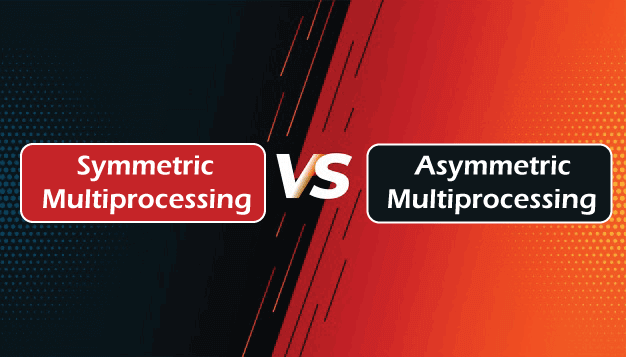Difference between Symmetric and Asymmetric Multiprocessing in Operating SystemThe CPU is a key part of the computer system. It performs mathematical and logical procedures as well as input-output tasks. Additionally, it produces signals to synchronize the operations of other parts. Asymmetric and symmetric multiprocessing is the two different types of multiprocessing. A multiprocessing system contains more than one processor and can run numerous processes simultaneously. All CPUs share the same memory in symmetric multiprocessing. In Asymmetric Multiprocessing, a single master processor controls the system's data structure. In this article, you will learn about the difference between symmetric and asymmetric multiprocessing in the operating system. But before discussing the differences, you must know about the symmetric and asymmetric multiprocessing in the operating system. What is Symmetric Multiprocessing?Symmetric multiprocessing refers to the use of all processors to conduct OS tasks. It doesn't have a master-slave relationship like asymmetric multiprocessing, and the shared memory is used to communicate by all processors here. The processors start processes from the standard ready queue, and every CPU might have its private queue of ready-to-execute programs. The scheduler must ensure that no two CPUs run the same task simultaneously. Symmetric Multiprocessing provides proper load balancing, improved fault tolerance, and decreases the possibility of a CPU bottleneck. It is complicated since the entire CPUs share a memory, and a processor failure in Symmetric Multiprocessing reduces computing capacity. What is Asymmetric Multiprocessing?The processors in asymmetric multiprocessing have a master-slave relationship, with one master processor controlling the other slave processors. The slave processors may receive specified tasks from the master processor or receive processes from the master processor. The master processor manages the data structure. The master processor manages the scheduling of processes, I/O processing, and other system operations. If a master processor fails, one of the slave processors assumes control of the execution. If one slave processor fails, the other slave processor takes over. It is simple since the data structure and a single processor controls all system actions. Assume there are four CPUs named C1, C2, C3, and C4. C4 is the master processor and allocates tasks to the other CPUs. If C1 is assigned process P1, C2 is assigned process P2, and C3 is assigned process P3. Each processor will only work on the processes that have been assigned to them. The key difference between the Symmetric and Asymmetric Multiprocessing
There are various key differences between Symmetric and Asymmetric Multiprocessing in the operating system. Some main differences between Symmetric and Asymmetric Multiprocessing in the operating system are as follows:
Head-to-head comparison between the Symmetric and Asymmetric MultiprocessingThere are various head-to-head comparisons between Symmetric and Asymmetric Multiprocessing. Some differences between Symmetric and Asymmetric Multiprocessing are as follows:
ConclusionA multiprocessing system may be either symmetric or asymmetric. The primary distinction between symmetric and asymmetric multiprocessing is that the processors in symmetric multiprocessing are similar and share the main memory. In contrast, Asymmetric multiprocessing uses processors that are not identical and function on a slave-master basis. |
 For Videos Join Our Youtube Channel: Join Now
For Videos Join Our Youtube Channel: Join Now
Feedback
- Send your Feedback to [email protected]
Help Others, Please Share









